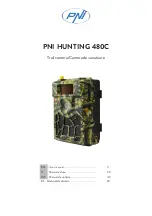
48
Installation
Appendix
Introduction
How to Use
Defi
nitions in
Confi
guration
Server
A maximum of fi ve servers can be registered.
Server name
The unique server name.
The four kinds of servers supported are email server, FTP server, HTTP server and
network storage.
Email Server Settings.
Sender email address
Email address of the sender.
Recipient email address
Email address of the recipient.
Server address
Domain name or IP address of the external email server.
User name
User name on the external email server.
Password
Password on the external email server.
FTP Server Settings.
Server address
Domain name or IP address of the external FTP server.
Server port
The default port is port 21 but this number can be changed to any
value from 1025 to 65535.
User name
User name on the external FTP server.
Password
Password on the external FTP server.
FTP folder name
Name of folder on the external FTP server. The string must
conform to that of the external FTP server. Some FTP servers cannot accept
preceding slash symbol before the path without virtual path mapping. Refer to the
instructions for the external FTP server for details. The folder privilege must be open
for upload.
Passive Mode
Check to enable transmission passive mode.
HTTP Server Settings.
URL
URL to upload the media.
User name
User name on the external HTTP server.
Password
Password on the external HTTP server.
Network Storage Settings. Only one network storage is supported.
Network storage location
Path to upload the media.
Workgroup
Workgroup for network storage.
User name
User name on the network storage.
Password
Password on the network storage.
After entering the server settings, the user can click on
to test whether the
settings are correct. The testing result will be shown in a pop-up window.
Application (Cont.)
















































